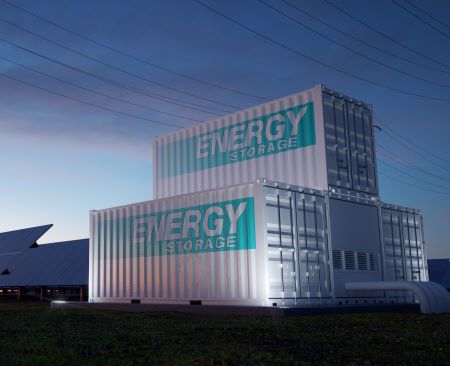Uncover the grid’s potential and the inherent challenges, and consider the recommendations presented in a recent Engineering Institute of Technology (EIT) webinar about Data-Centric Evolving Power Grids.
The power sector is undergoing a remarkable transformation, shifting from a utility-centric to an end-user-centric architecture. This transition is not limited to a single segment or sub-sector but encompasses a broad range of participants.
As the power grid becomes more decentralized and relies heavily on renewable energy sources, it presents both challenges and opportunities for engineers and professionals in the field.
This month, EIT hosted an insightful webinar presented by Professor Akhtar Kalam, the EIT Academic Board Deputy Chair.
The webinar shed light on the shifting landscape of power grids, moving from a utility-centric architecture to an end-user-centric one. The discussion centered around the transition to renewable energy and the need for a multilateral approach to ensure reliable grid operations.
This article aims to summarize the key insights shared during the webinar.

Paradigm Shift in Power Grid Architecture
The future power grid will witness a paradigm shift driven by privatized renewables and a distributed grid structure. This transformation will not be limited to a specific sector but will encompass various segments simultaneously.
Professor Kalam emphasized the changing market dynamics: “The market is new, and the market is liberalized.” He highlighted the increased cross-border bulk power transfers to facilitate the effectiveness of market mechanisms.
Professor Kalam also pointed out that customers are not simply consumers but “prosumers.” He stated, “They are no longer just customers buying electricity or electricity supply companies; they are now also producing electricity for themselves and selling it back to the grid.”
Given this shift, the grid’s architecture must become multilateral, enabling effective communication and trade between stakeholders.
Addressing Intermittency Challenges
Renewable energy sources, such as solar and wind, offer clean and sustainable alternatives to traditional power generation methods.
However, their intermittent nature presents a significant challenge for the power sector. The unpredictable availability of sunlight and wind makes maintaining a consistent and reliable power supply difficult.
To tackle this challenge, Professor Kalam suggested that the coming decade will be defined by the rampant growth in new intelligent energy technologies, much like computers and communication devices have shaped the past. He emphasized that making energy systems “smart” is the key to protecting the planet and fueling the global economy.
Furthermore, the power sector must enhance its weather forecasting capabilities. Accurate weather forecasting plays a crucial role in predicting the availability of solar irradiation and wind patterns.
Accurate forecasts can be made by leveraging sophisticated AI and machine learning software tailored to the power industry.
Addressing Intermittency Challenges
Renewable energy sources, such as solar and wind, offer clean and sustainable alternatives to traditional power generation methods.
However, their intermittent nature presents a significant challenge for the power sector. The unpredictable availability of sunlight and wind makes maintaining a consistent and reliable power supply difficult.
To tackle this challenge, Professor Kalam suggested that the coming decade will be defined by the rampant growth in new intelligent energy technologies, much like computers and communication devices have shaped the past. He emphasized that making energy systems “smart” is the key to protecting the planet and fueling the global economy.

Furthermore, the power sector must enhance its weather forecasting capabilities. Accurate weather forecasting plays a crucial role in predicting the availability of solar irradiation and wind patterns.
Accurate forecasts can be made by leveraging sophisticated AI and machine learning software tailored to the power industry.
Key Takeaways and Recommendations
The webinar provided several key takeaways, including the importance of customer and data-centric design, the energy transition towards renewables, and the significance of data analytics, probabilistic modeling, and real-time risk-limiting control systems.
Professor Kalam highlighted the rise of electric vehicles (EVs) and the need for collaboration and real-time data analytics to manage grid operations effectively.
He also stressed the role of data analytics and real-time control in the multilateral grid scenario.
Stakeholders must collect comprehensive data and employ advanced analytics to collate and interpret new data streams in real time. This enables decision-makers to make informed choices regarding power generation, demand management, and grid stability.

What Lies Ahead for The Grid
The shift towards a multilateral grid architecture emphasizes the need for effective collaboration, data sharing, and real-time decision-making among stakeholders.
As renewable energy sources continue to replace traditional generation methods, the power sector must embrace advanced technologies like AI, machine learning, and data analytics to overcome intermittency and EV integration challenges.
By adopting a customer and data-centric approach, the power grid of the future can achieve reliable, sustainable, and efficient operations. This transformation paves the way for more resilient and cleaner energy infrastructure, contributing to a greener and more sustainable future.
The recent EIT webinar gave a glimpse into the future of power grids, and EIT’s courses prepare professionals to take advantage of the opportunities presented by the evolving power grid.
EIT’s courses in renewable energy offer an excellent opportunity for those looking to remain at the forefront of the energy sector revolution. By gaining valuable skills in data analytics, machine learning, and AI, individuals can contribute to the transformation of the power grid and help drive the development of more sustainable and efficient infrastructure.


